Related Research Articles

Duke of Norfolk is a title in the peerage of England, and is the premier non-royal peerage. The seat of the Duke of Norfolk is Arundel Castle in Sussex, although the title refers to the county of Norfolk. The current duke is Edward Fitzalan-Howard, 18th Duke of Norfolk. The dukes have historically been Catholic, a state of affairs known as recusancy in England.

Earl Marshal is a hereditary royal officeholder and chivalric title under the sovereign of the United Kingdom used in England. He is the eighth of the great officers of State in the United Kingdom, ranking beneath the Lord High Constable of England and above the Lord High Admiral. The dukes of Norfolk have held the office since 1672.

Thomas Howard, 4th Duke of Norfolk, was an English nobleman and politician. He was a second cousin of Queen Elizabeth I and held many high offices during the earlier part of her reign.
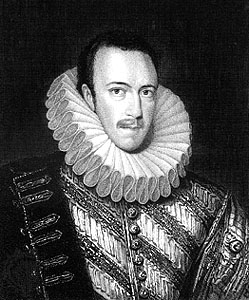
Philip Howard, 13th Earl of Arundel was an English nobleman. He was canonised by Pope Paul VI in 1970, as one of the Forty Martyrs of England and Wales. Howard lived mainly during the reign of Queen Elizabeth I; he was charged with being a Catholic, quitting England without leave, and sharing in Jesuit plots. For this, he was sent to the Tower of London in 1585. Howard spent ten years in the Tower, until his death from dysentery.

Thomas Howard, 14th Earl of Arundel KG, was an English peer, diplomat and courtier during the reigns of King James I and King Charles I, but he made his name as a Grand Tourist and art collector rather than as a politician. When he died he possessed 700 paintings, along with large collections of sculptures, books, prints, drawings, and antique jewellery. Most of his collection of marble carvings, known as the Arundel marbles, was eventually left to the University of Oxford.

Baron Mowbray is a title in the Peerage of England. It was created by writ for Roger de Mowbray in 1283. The title was united with the Barony of Segrave in 1368, when John Mowbray, 1st Earl of Nottingham and 5th Baron Mowbray, succeeded to that title. His successor was named Duke of Norfolk. With the childless death of Anne Mowbray, 8th Countess of Norfolk, in c.1481, the Barony went into abeyance between the Howard and Berkeley families, and both styled themselves Baron Mowbray and Seagrave.

Thomas Howard, 1st Earl of Suffolk, of Audley End House in the parish of Saffron Walden in Essex, and of Suffolk House near Westminster, a member of the House of Howard, was the second son of Thomas Howard, 4th Duke of Norfolk by his second wife Margaret Audley, the daughter and eventual sole heiress of Thomas Audley, 1st Baron Audley of Walden, of Audley End.

Edward William Fitzalan-Howard, 18th Duke of Norfolk,, styled Earl of Arundel between 1975 and 2002, is a British peer who holds the hereditary office of Earl Marshal and, as Duke of Norfolk, is the most senior peer in the peerage of England. He is also the titular head of the House of Howard.
Baron Furnivall is an ancient title in the Peerage of England. It was originally created when Thomas de Furnivall was summoned to the Model Parliament on 24 June 1295 as Lord Furnivall. The barony eventually passed to Thomas Nevill, who had married the first baron's descendant Joan de Furnivall, and he was summoned to parliament in her right. Their daughter, Maud de Neville, married John Talbot, who was also summoned to parliament in her right. He was later created Earl of Shrewsbury. On the death of the seventh earl in 1616, the barony fell into abeyance. The abeyance was terminated naturally in favour of the earl's daughter Alethea Howard in 1651 and passed through her to the Dukes of Norfolk. On the death of the ninth Duke in 1777, the barony again fell into abeyance. In 1913 the abeyance was terminated again in favour of Mary Frances Katherine Petre, daughter of Bernard Petre, 14th Baron Petre. Through her father she was a great-great-great-granddaughter of the ninth Baron Petre and his first wife Anne Howard, niece of the ninth Duke of Norfolk, who became co-heir to the Barony on her uncle's death in 1777. On Lady Furnivall's death in 1968 the barony fell into abeyance for the third time.
In English criminal law, attainder was the metaphorical "stain" or "corruption of blood" which arose from being condemned for a serious capital crime. It entailed losing not only one's life, property and hereditary titles, but typically also the right to pass them on to one's heirs. Anyone condemned of capital crimes could be attainted.
The enrolled bill rule is a principle of judicial interpretation of rules of procedure in legislative bodies. Under the doctrine, once a bill passes a legislative body and is signed into law, the courts assume that all rules of procedure in the enactment process were properly followed. That is, "[i]f a legislative document is authenticated in regular form by the appropriate officials, the court treats that document as properly adopted."
Lord William Howard was an English nobleman and antiquary, sometimes known as "Belted Will" or "Bauld (bold) Will".
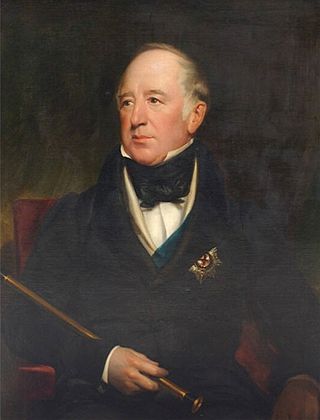
Bernard Edward Howard, 12th Duke of Norfolk,, was a British peer.
The Chief Butler of England is an office of Grand Sergeanty associated with the feudal Manor of Kenninghall in Norfolk. The office requires service to be provided to the Monarch at the Coronation, in this case the service of Pincera Regis, or Chief Butler at the Coronation banquet.
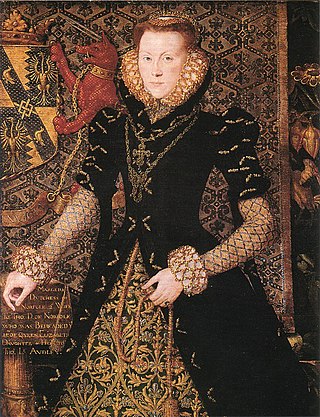
Margaret Howard, Duchess of Norfolk was the sole surviving child of Thomas Audley, 1st Baron Audley of Walden, and Lady Elizabeth Grey, herself the daughter of Thomas Grey, 2nd Marquess of Dorset, and his wife Margaret Wotton, therefore Margaret was a niece of Henry Grey, 1st Duke of Suffolk and first cousin of Lady Jane Grey.
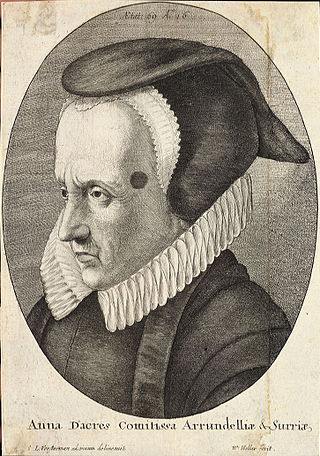
Anne Howard, Countess of Arundel, was an English poetess, noblewoman, and religious conspirator. She lived a life devoted to her son, Thomas Howard, and religion, as she converted to the illegal and underground Catholic Church in England in 1582, in defiance of Queen Elizabeth I's policy of Caesaropapism. She was known to be a "woman of strong character, and of religious desposition…whose influence soon made itself felt upon her husband… the increasing seriousness of his thoughts led him in the direction of Romanism…". She was also known as an author of Christian poetry and for literary works written about her.
The Fitzalan Chapel is the chancel of the church of St Nicholas in the western grounds of Arundel Castle, in West Sussex, England.
Lord Henry Thomas Howard-Molyneux-Howard, known as Henry Howard until 1812, and as Henry Molyneux-Howard until 1817, was a British gentleman who served as Deputy Earl Marshal in the latter part of the reign of George III and early in the reign of George IV. On the inheritance of the Dukedom of Norfolk in 1815 by his elder brother Bernard, Henry Molyneux-Howard in 1817 was granted the courtesy title "Lord", the style of a younger son of a duke.
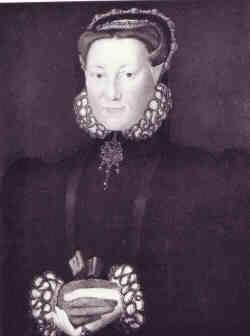
Elizabeth Leyburne, Duchess of Norfolk, was a member of the English nobility. She first married Thomas Dacre, 4th Baron Dacre; following his death in 1566, she secretly married Thomas Howard, 4th Duke of Norfolk. She was his third wife.

Lady Margaret Sackville, formerly Lady Margaret Howard, was the wife of Robert Sackville, 2nd Earl of Dorset.
References
- 1 2 "The King & Anor v Countess of Arundel & Anor [1616] EWHC Ch J11 (22 May 1616)". British and Irish Legal Information Institute. Retrieved 2 November 2023.
- ↑ Hammond, Anthony (1825). A Summary Treatise on the Practice and Proceedings in Parliament: The Passing of Public and Private Bills: and the Law of Elections. London. p. 50. ISBN 1110166621.
- ↑ Manning, James; Ryland, Archer (1830). Reports of Cases Argued and Determined in The Court of King's Bench, During Michaelmas Term, Ninth Geo. IV. Vol. 3. London.